Pide is a delicious Turkish flatbread often topped with meat or cheese for a Turkish pizza-like dish. Read on to find out what makes Turkish pide so unique – and, of course, to get the pide recipe I use to make the most classic of them all. Kuşbaşılı pide, or Turkish pizza with meat, if you like.
Every time I hear pide referred to as “Turkish pizza”, a little piece of my heart breaks. The reference is understandable and an easy, shorthand way of explaining to a foreigner what pide is.
Yet, while pide may not be as globally famous as its Italian cousin, its place in the local cuisine, history and deliciousness is secondary to none. In fact, it is quite likely that their etymology share a common origin in the Arameic word for bread – pita.
This is not to say that pizza had its origins in the Middle East. But it is to say that when pizza did become a thing in Italy, they may have named the dish after an ancient Middle Eastern word for bread (though there are other possibilities, too).
What is Turkish pide?
But enough about the words. What is pide and what sets it apart from pizza?
In Turkey, pide is a flatbread which can roughly be divided into two categories.
The first type is without topping, such as the beautiful ramadan pide made during the holy month every year. These are often circular in shape and eaten along savoury foods.
The second type of pide, which we are concerned with here, is a Turkish flatbread with delicious toppings. It’s usually shaped into a long oval and topped with simple ingredients. The sides are then folded in to achieve an elongated boat shape. Less commonly, it may also be closed altogether before being baked in a hot wood fired stone oven.
As ever, Turks enjoy their traditional flavourings. Most places offer a choice between cheese filling, meat & vegetable filling (such as this one), spinach filling or minced meat filling.
In other words, the similarities to pizza are indisputable.
Is pide really like a Turkish pizza?
So, what distinguishes a pide from pizza, apart from its cultural and historical context?
The main differences are the shape and the toppings.
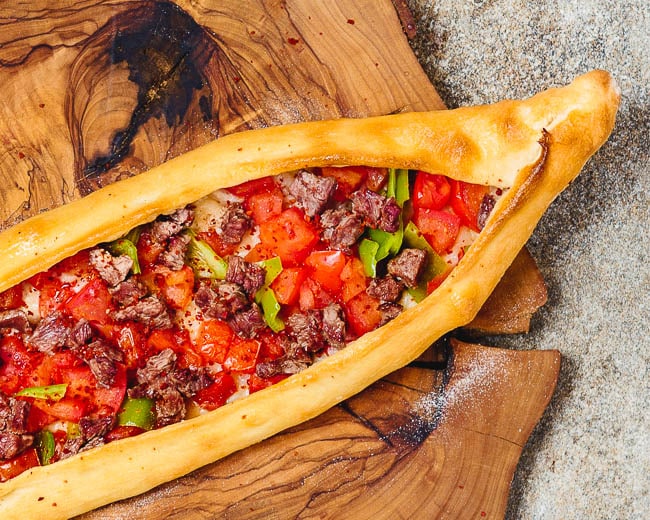
As mentioned, pide isn’t circular, but rather an elongated boat shape, usually many times as long as it is wide. Unlike pizza, the sides are folded in for a double crusted edge. If you’re making proper pide, the sides are brushed with butter as soon as they come out of the oven.
The biggest difference between pide and pizza is perhaps that the former doesn’t have a sauce. Where the quality of the sauce may make or break a Neapolitan pizza, a pide is usually topped with fresh ingredients that require little preparation beyond chopping.
What’s more, pide doesn’t usually have cheese on it unless it’s the main topping. Pides with meat, for example, usually don’t have cheese on them by default, though many restaurants now offer this is an optional extra, presumably as a result of the pizza influence creeping into Turkish cuisine as well.
In fact, if you want to call something Turkish pizza, lahmacun is probably closer to Italian pizza than pide is. But that’s another story! Which you can read more about through the link.
How to make kuşbaşılı pide – or Turkish pizza with meat, if you like
Making pide is easier than you might think. You need a dough and some topping. Unlike pizza, there’s no need to prepare any sauces. For most pide, the toppings are put on raw and freshly chopped. One of the few exceptions is spinach pide, wherer the spinach is quickly sauteed with onions and then squeezed of excess liquid before use.
My favourite version of this Turkish flatbread is also one of the easiest to make. Kuşbaşılı pide.
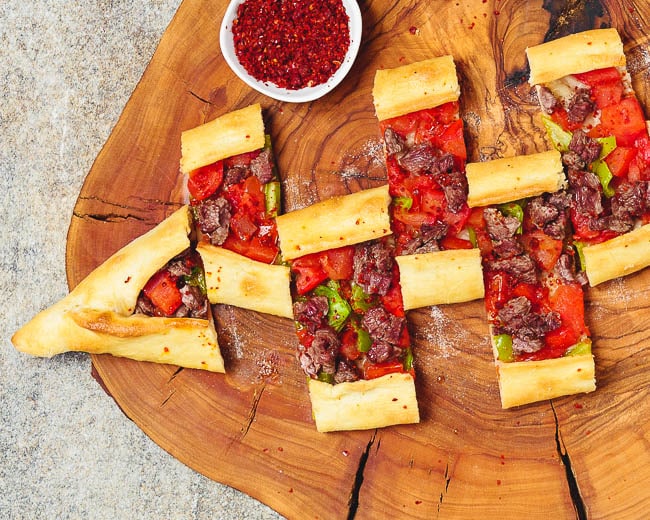
Kuşbaşı is simply the Turkish term for finely chopped meat. Because this topping is as simple as it is delicious. In fact, it’s the simplicity that makes it such a beautiful dish.
Chopped meat, fresh tomato, some green peppers. That’s more than enough for utmost satisfaction.
The Turkish pide recipe I use is very simple.
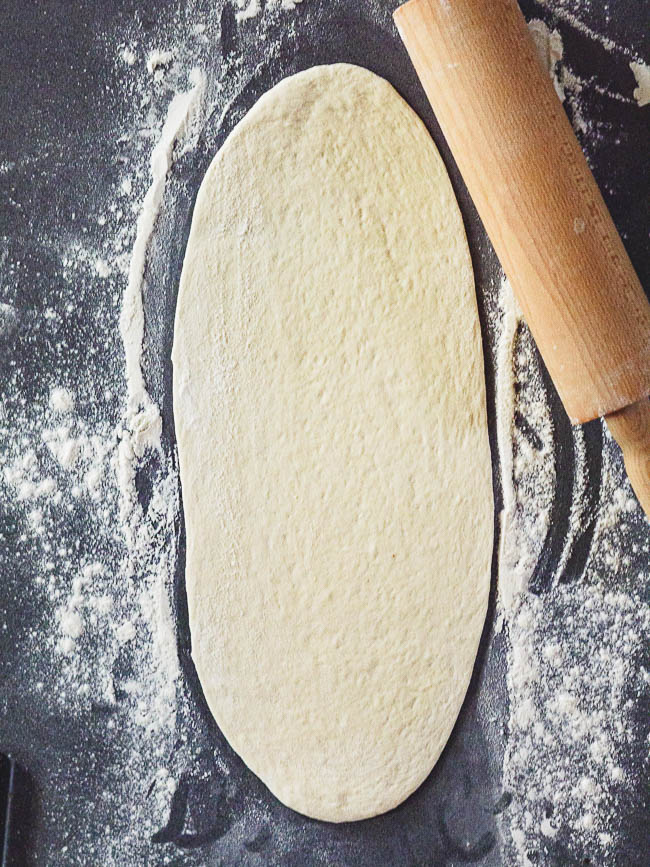
There are of course any number of ways to make dough for pide, each yielding a slightly different result in terms of crispness, how much it rises and how easy it is to work with. I use a traditional recipe from Gaziantep, one of Turkey’s premier food regions.
With simple doughs like this, it’s all in the process. The initial bloom from mixing a portion of the flour with water and yeast allows the yeast to come to life and the flour to absorb a lot of the water.
This helps make the dough easier to work with, while coming out of the oven perfectly crispy and tender. Just as I like it!
One word of advice. I’ve only given weights in the recipe. When baking, I always, always, recommend using weight measurements only. Volume measurements such as cups or ml are inaccurate and are often the cause of any baking mishaps.
So, if you don’t have one but want to bake, I highly recommend investing in an electric scale!

As far as the toppings are concerned, there’s no need to worry about sauces or any other detailed prep. All you need to do, is chop everything finely, season with salt and pepper and add however much you like to taste. Just make sure your tomatoes (or other ingredients) aren’t too wet. We want pide to be crispy, not sloppy!
How to serve Turkish pide with chopped meat
As with pizza, it’s all too easy to overeat on pide fresh out of the oven.
I recommend starting the meal with a bowl of classic Turkish lentil soup. This is always an option at pide restaurants in Turkey, and an option taken up by many a guest.
I also like to serve a simple salad alongside. A shepherd salad is great in summer, while a simple green leaf salad will do in winter.
Or why not a bowl of cacik, the Turkish version of tzatziki? It works perfectly with the meat. It’s all up to you.
Hope you enjoy!
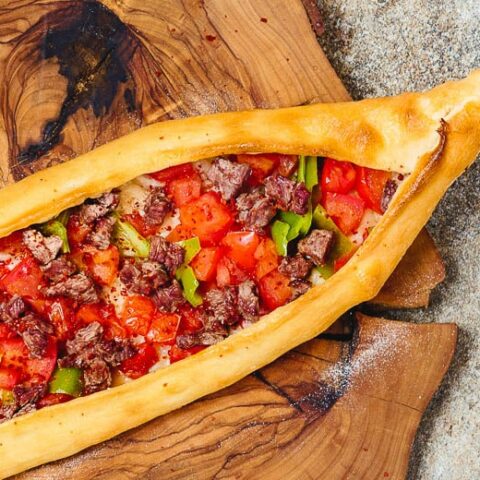
Kuşbaşılı pide (Turkish pizza with meat)
Ingredients
Dough
- 550 g strong white bread flour
- 1 tsp sugar
- 25 g fresh yeast, or 6 g instant (fast action) dried yeast
- 350 g water, cold or at room temperature
- 10 g salt
- 1 Tbsp extra virgin olive oil
Filling
- 4 medium tomato, soft core removed, chopped into small cubes
- 400 g beef, tender cut, cut into small cubes
- 1 handful Turkish green peppers, or 1 green bell pepper, cut into small cubes
- 2-3 Tbsp butter, soft or melted
- pul biber (Aleppo pepper), to serve
- salt and pepper
How I make it
- Mix 350 g of the flour with the sugar, yeast and water. Cover and leave until bubbling and doubled in size, around 30-45 minutes.
- Add the remaining (200 g) flour along with the salt and extra virgin olive oil. Knead until you've got a dough which is soft and smooth and you can stretch the dough until it's transparent without it breaking. I use a kitchen machine with a dough hook running at medium speed, in which case it takes 10-15 minutes. Make sure the dough doesn't get too warm during this process – if it gets as warm as the inside of your wrist, take a break and place the dough in the fridge for 15 minutes before continuing. Once ready, cover and leave to rise until doubled in size, 1-2 hours. At this point you may also leave it in the fridge for up to 48 hours.
- Preheat your oven to its highest heat setting. If you have one, place a pizza stone or baking stone in the oven to heat up with it.
- Split the dough into 6 equally sized pieces and shape into rounds. Cover with a moist cloth and let the dough rest for 20-30 minutes.
- Add a little salt to the chopped tomato and set aside. Add plenty of salt and pepper to the meat and set aside.
- Flour your kitchen counter well. Using a rolling pin in the same direction back and forth, roll out one of the dough rounds into an oval. Turn the dough regularly in the process and add more flour as required to make sure it doesn’t stick to the kitchen counter.
- Transfer the pide to a baking parchment. Add tomatoes, meat and peppers, leaving approx 2 cm along the edges. Add a little more salt, then fold the sides in slightly and pinch the ends together, so the pide is half closed. Repeat with the remaining dough. Depending on how large you make them, you can usually bake two pides at the same time.
- Making sure your baking or pizza stone is properly preheated, transfer the pides to the oven and bake until golden. This can take anything from 5 to 15 minutes or more, depending on how hot your oven is and whether you are using a baking or pizza stone.
- As soon as the pides are out of the oven, brush the edges well with butter. Slice and serve immediately, with a good sprinkle of pul biber on top, then repeat with the remaining pide.


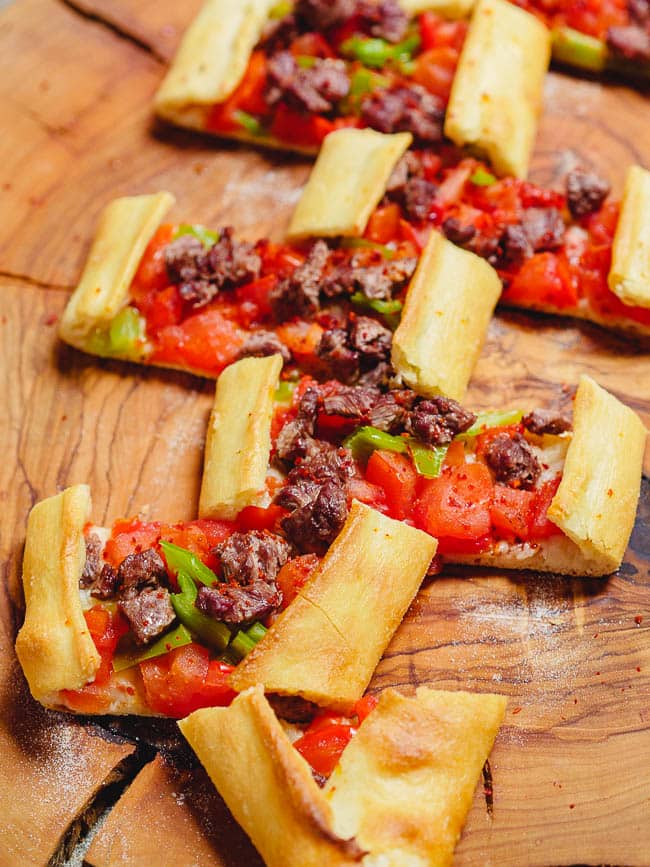
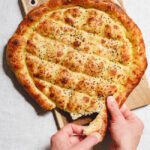
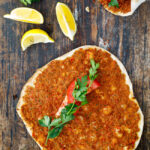

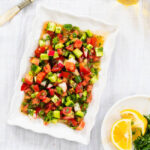
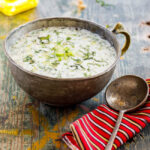


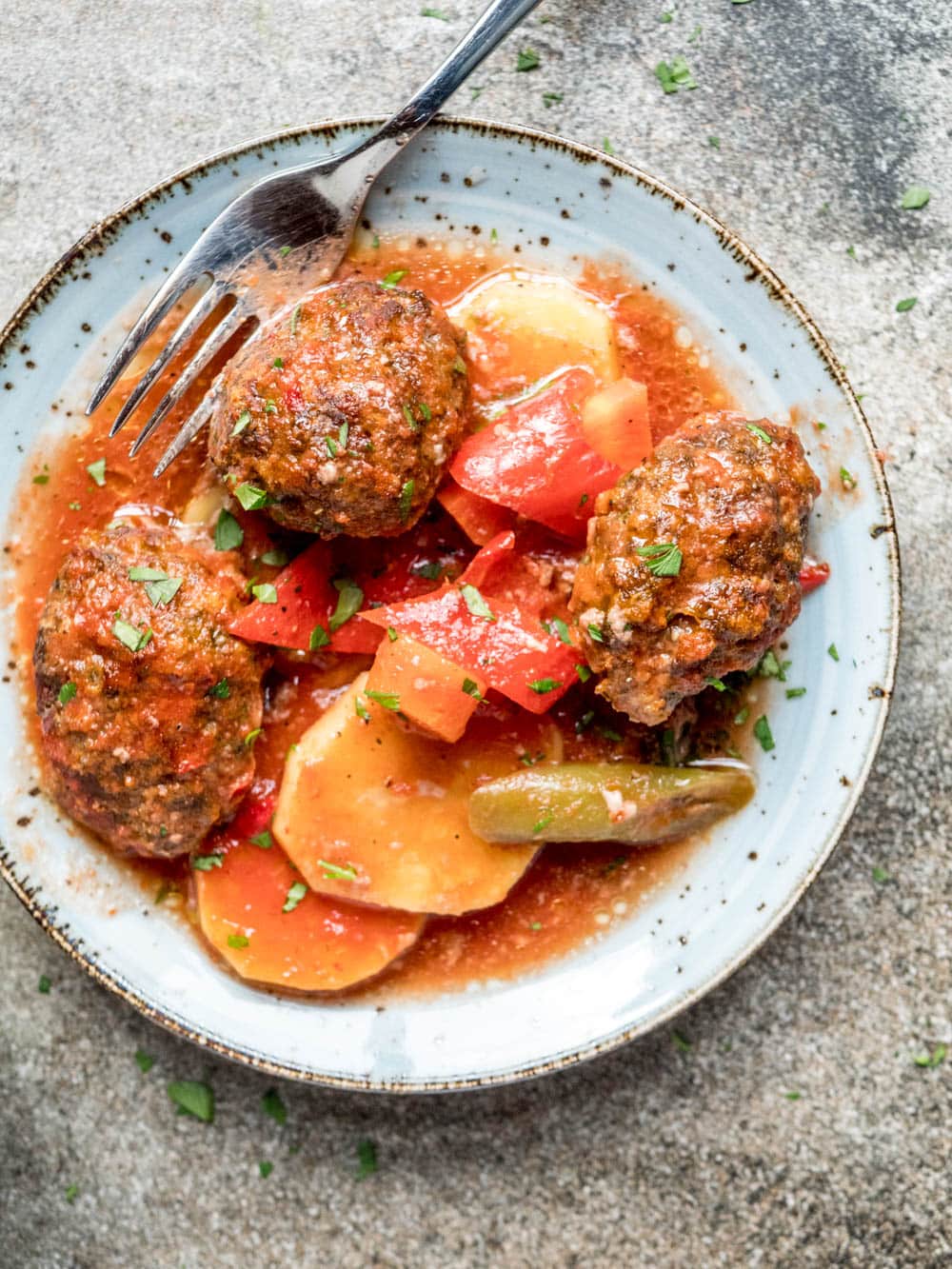
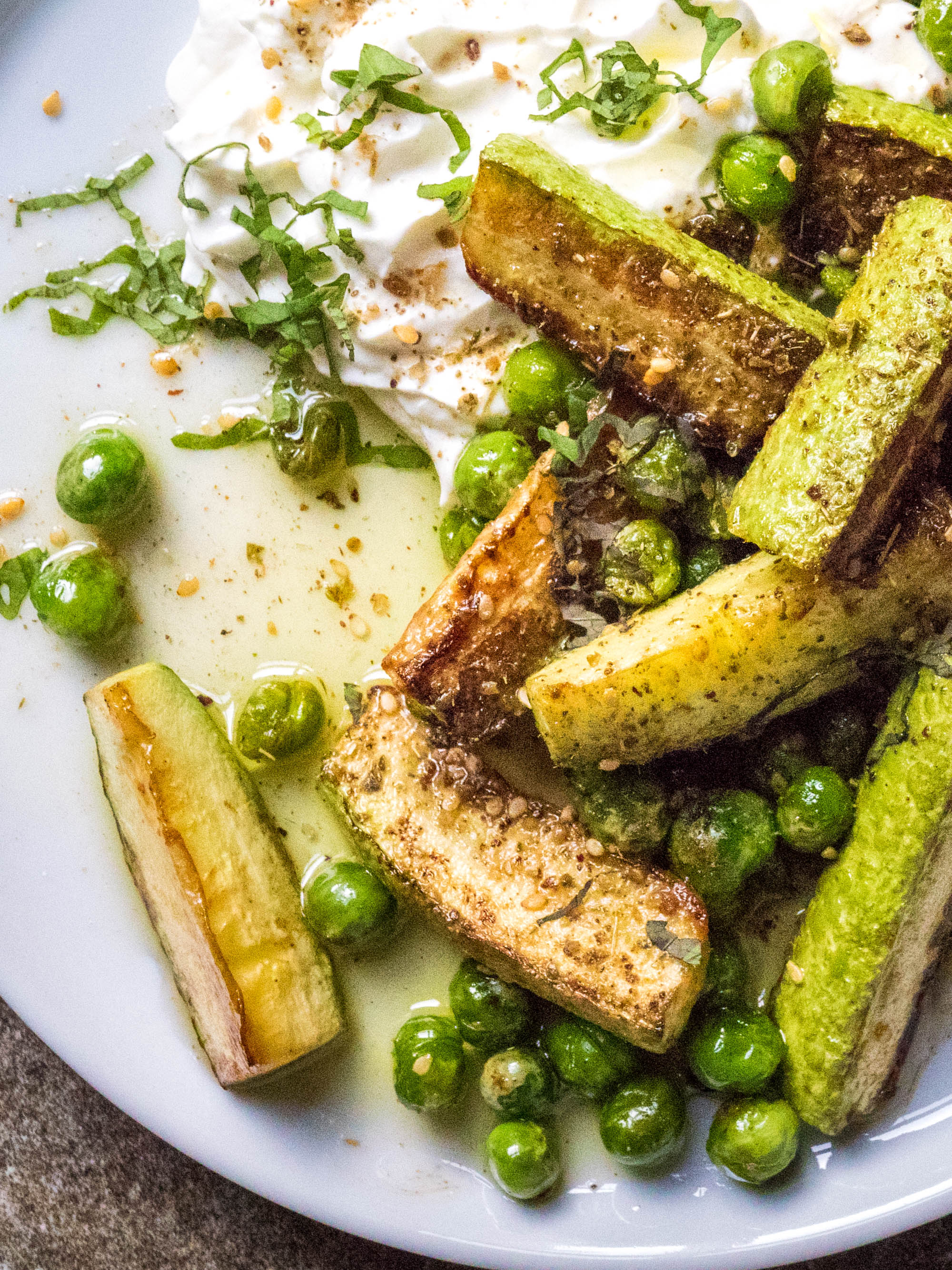
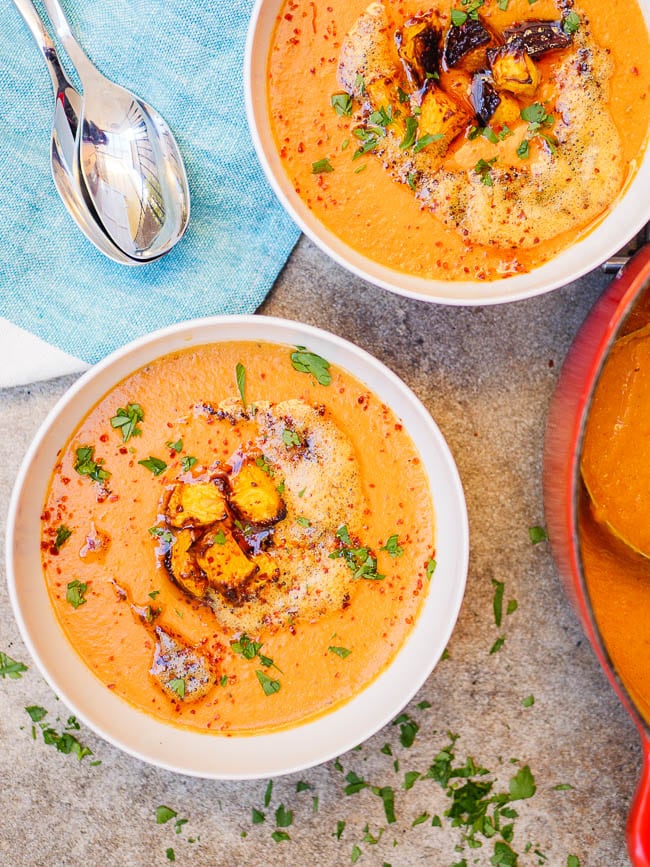
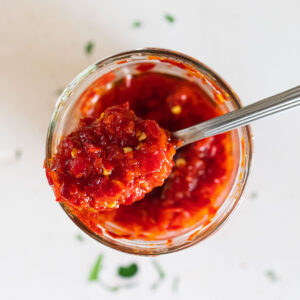
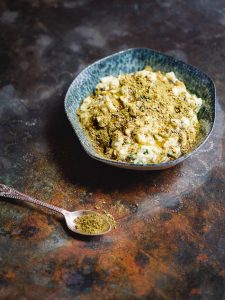
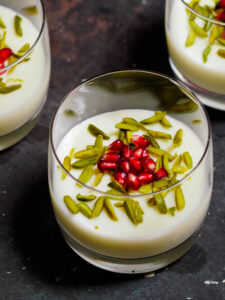




One Response
Always make soup Turkish way, love there food, and efes,looking forward to the bread recipe .